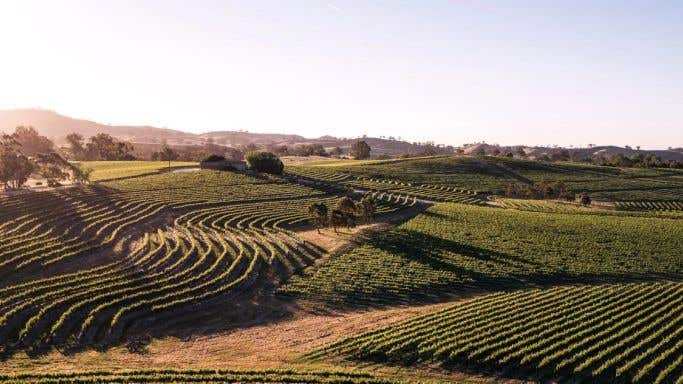And the later-released Contours Riesling 2013. Richard's reverence for these Rieslings becomes almost religious…
From $14.99, NZ$22.95, AU$24, 189 Swedish kronor, €18.20, £15.35, 229 Norwegian kroner, 3,150 Japanese yen, SG$54.99
Find Pewsey Vale Riesling 2018
The only thing that can improve on a glass of Riesling is a second glass of Riesling. Voila, this week's double-header, both modern classics from Riesling specialists Pewsey Vale.
Although perhaps not so modern, as it turns out. Present-day Pewsey Vale has been growing Riesling in South Australia's Eden Valley since 1961, with vineyard material dating back to 1847. That has surely allowed plenty of time to discover the most authentic expression of their terroir, and indeed these two Rieslings exemplify the South Australian style: vivid lime fruit, oily texture and a distinctive smoky tone.
The 2018 vintage Riesling is lighter and shorter on the palate than the Contours 2013; but it is also almost half the price, hence my main choice for the wine of the week. Like most Riesling, the 2018 delivers bracing refreshment and pin-sharp clarity of lime fruit that increasingly reminds me of the ice-cold calamansi juice that is a fixture here in Singapore.
The late-release Contours has a dairy-like characteristic that gives fuller body and creamy flavours, as well as sweet spice contrasting with the bone-dry finish. It is certainly the more complex and mature of the two, as you'd expect, but each version has its place: the 2018 Riesling for an invigorating paddle in the Riesling pool, and the 2013 Contours for a deeper dive into fathoms of flavour.
Both boast the trio of characteristics that I mention above as my markers for Clare/Eden Valley Riesling: lime fruit, oiliness and smoky tones. This combination was a failsafe way of identifying the wines during my MW studies, and it is so distinctive that I wondered how much derived from winemaking and how much from soil and climate. Specifically, I wondered if the apparent widespread use of neutral yeast, protective handling (that is, minimising oxygen exposure) and stainless steel were the main contributors to the style.
Who better to answer than Pewsey Vale's celebrated winemaker Louisa Rose? First, she corrected my assumptions: 'The Contours Riesling is made 100% oxidatively and with only the wild yeast that come in with the grapes from the vineyard. The 2018 Pewsey Vale Riesling is a blend of a number of parcels from the vineyard, picked over a period of about three weeks as each ripens. Three-quarters of these parcels were made oxidatively and fermented with the wild yeast that come in with the grapes from the vineyard. The other quarter was handled reductively and inoculated with a commercial yeast.'
Intriguingly, her research suggests that the ambient-yeast-fermented Riesling is not significantly different from an inoculated ferment, especially when the wines are young, but she has observed a 'subtle increase in line and texture from the wild ferments', which 'seem to age more slowly and more elegantly'.
Her conclusion is that soil and climate are the most significant factors in determining the style of their Riesling. As she puts it, 'the characters of the vineyard come through regardless of how you make it'.
This is, of course, the reason why regionality matters in wine. It is one of the pillars on which our faith depends, and I'm happy to bear witness (especially when the sacrament is so delicious). The force of personality of both these wines may not convert Riesling sceptics, but it is manna from heaven for believers. I'm evidently feeling the divine inspiration, metaphorically at least.
Pewsey Vale's wines are so well distributed that I have specifically recommended the 2018 and 2013 vintages, although more recent releases are also available. Drink it and believe.
For more on Riesling, see this 2013 article on Riesling and terroir and Brian Croser's fascinating 2011 lecture, 'What makes great Riesling'. See also this 2016 wine of the week.


